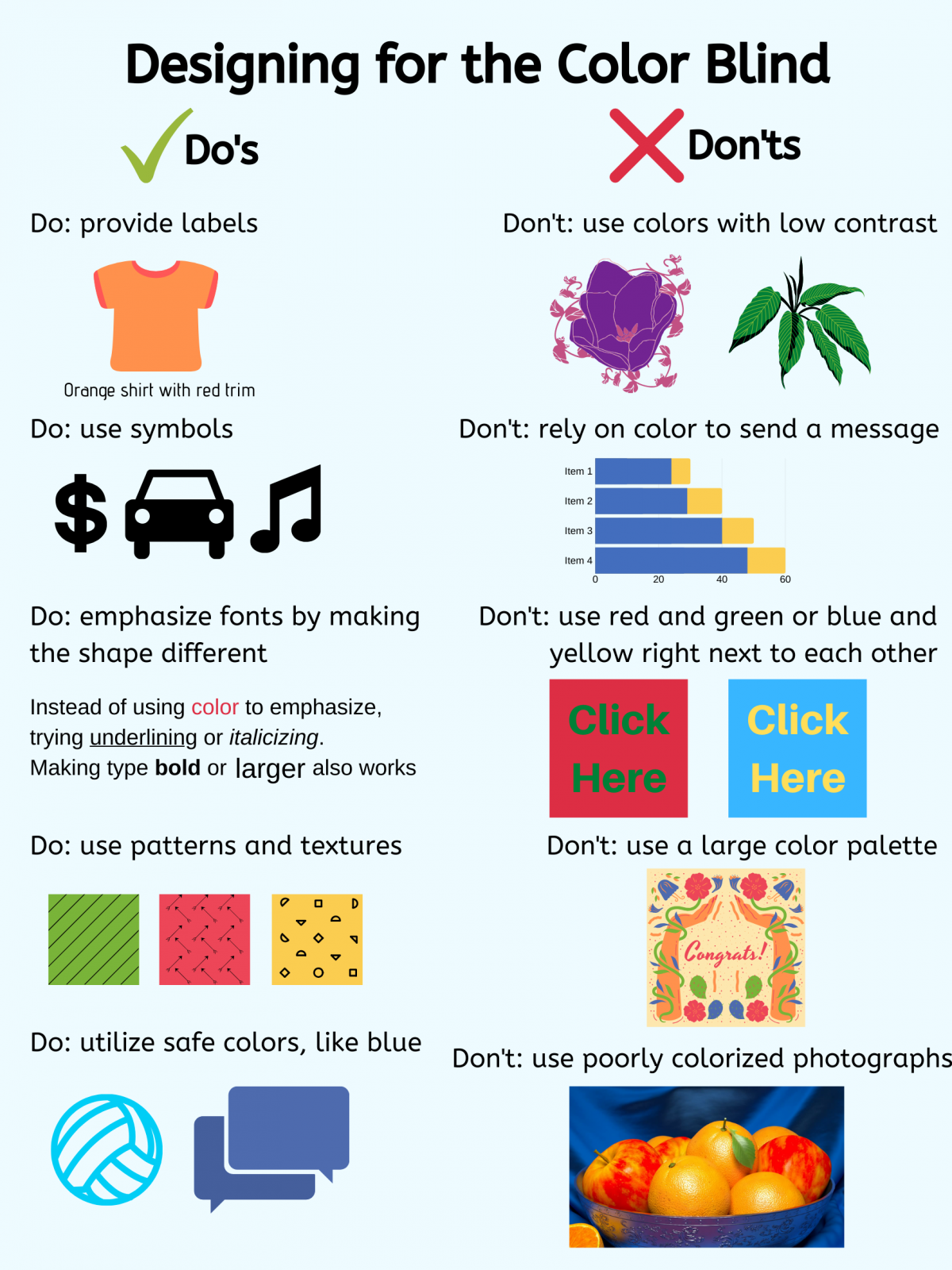This poster contains the basic Do’s and Don’ts for designing with a color blind audience in mind. The most important Don’t is to never use colors to tell a message. Using other elements like symbols, patterns, or manipulating text are easy ways to emphasize and highlight specific areas. Choosing the correct images is also important. Do not choose an image with poor saturation or colorization, which could make it difficult to understand. Try to find graphics with simple color schemes without green and red or blue and yellow taking the majority of the picture. Providing labels and captions is also important, so the audience can tell what the graphic depicts. Utilizing safe colors is also a good idea. Blue often appears in color blind-friendly color palettes. The reason why Facebook is blue is because its founder, Mark Zuckerberg, is red-green color blind (Widrich, 2016).
I chose to spotlight colorblindness because it is often forgotten about when talking about disabilities. Color Blindness is a condition where a person’s eyes cannot read colors as they present. The types of color blindness include red-green, blue-yellow, and complete color blindness. Color blindness occurs when specific rods in a person’s eye are either absent or not working properly. The result is having trouble distinguishing red and green or blue and yellow. On rare occasions, most or all of the rods are absent or defected, and the person cannot differentiate red, green, yellow, and blue (Tubert, 2019).
I chose color blindness because it is often forgotten about. Color blindness has always intrigued me, and it makes me think about animals with multiple rods in their eyes who can see more colors than humans can. As somebody who isn’t color blind, I know that there are colors I cannot distinguish because humans only have 3 sets of rods in their retinas.
Turbert, David. What Is Color Blindness? American Academy of Ophthalmology, 6 Sept. 2019, www.aao.org/eye-health/diseases/what-is-color-blindness. Widrich, Leo. “Why Facebook Is Blue: The Science of Colors in Marketing.” Resources, Buffer, 18 Sept. 2017, buffer.com/resources/the-science-of-colors-in-marketing-why-is-facebook-blue.
